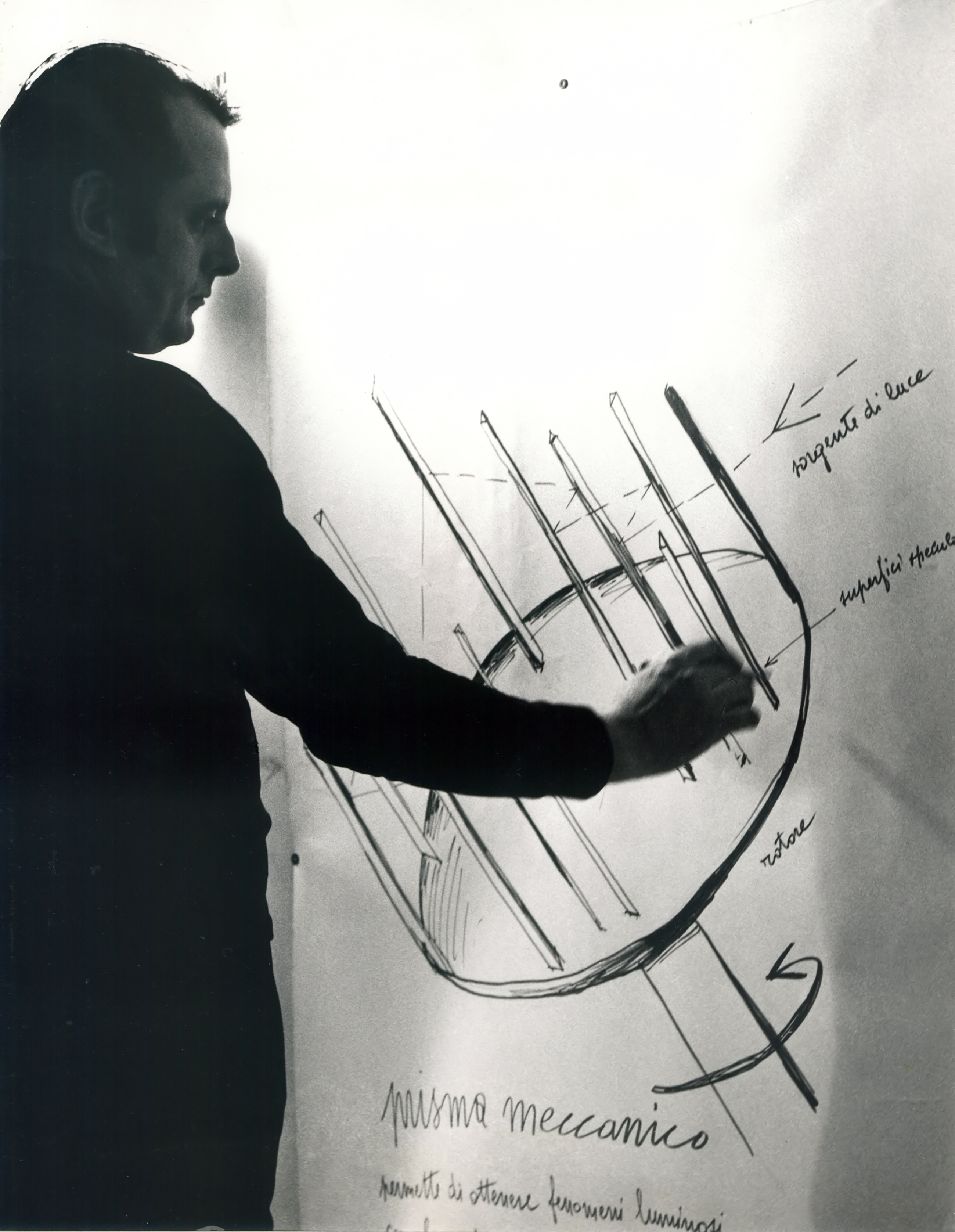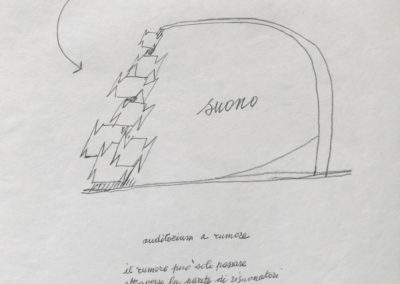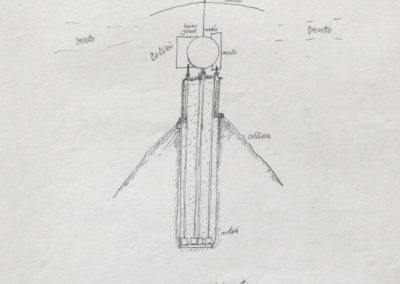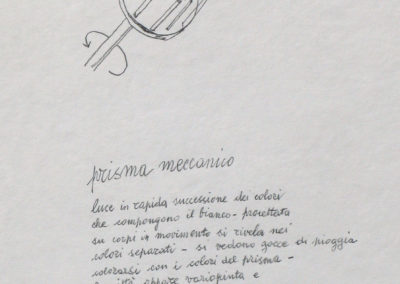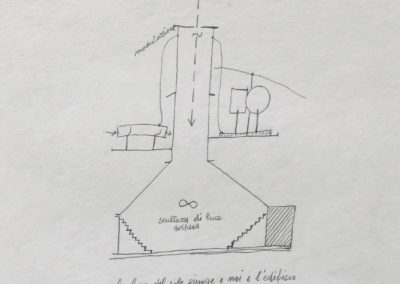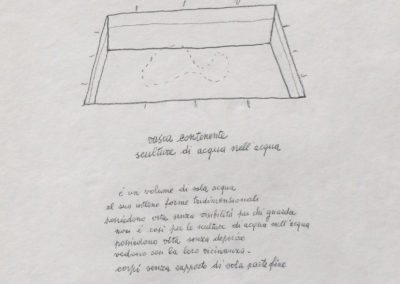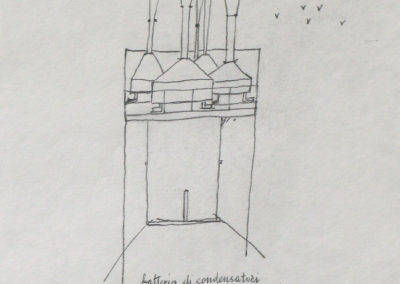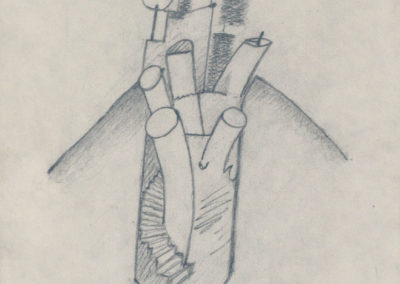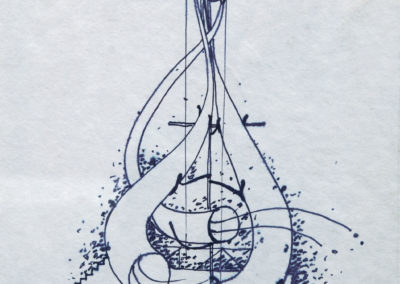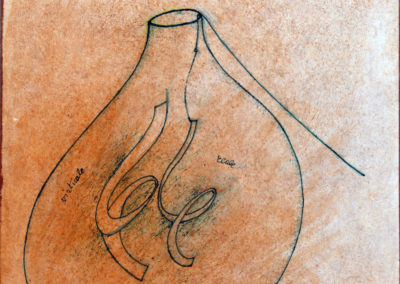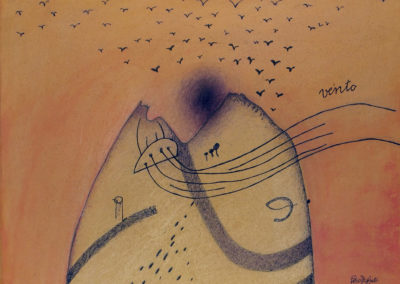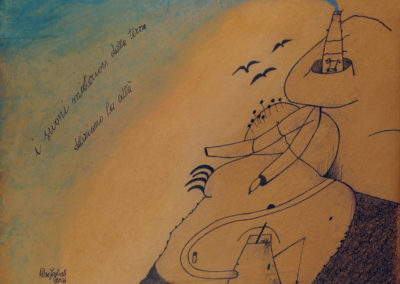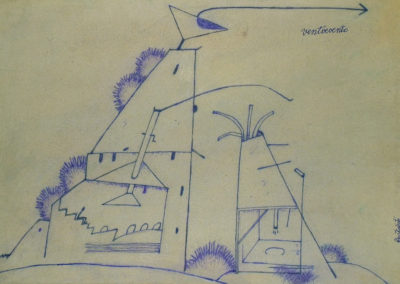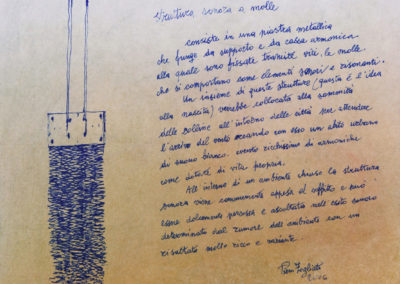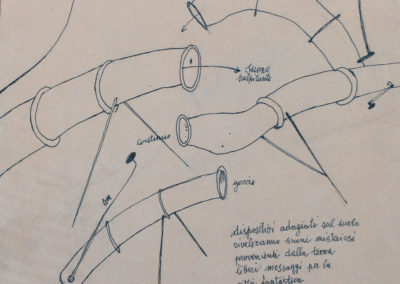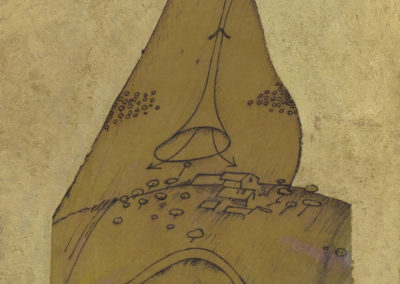Photographs of Piero Fogliati at work in 1969
As part of the journey that led to the development of the Fantastic City project, Piero Fogliati’s drawings represent a sort of logbook. The artist himself noted that «drawing invests my thoughts with strength and is a way to preserve my ideas, like a logbook. It is a means to establish what I want to achieve.» The drawings, which Fogliati referred to as fixations because they set his ideas on paper, highlight the original creative impulse, they represent the work “in nuce”, the starting point for the development of his projects. They range from works of a more descriptive nature, often accompanied by a wealth of notes, to more concise drawings that “fix” the immediacy of the idea, and finally to chronologically more recent works, often detached from a specific intended application where the artist, feeling free to be an independent observer of his own work, lingers over the use of colour, the development of the lines, the details of the composition.
FOGLIATI’S DRAWINGS – Marisa Vescovo
Fogliati’s graphic output is immense and wholly interwoven with his formal poetic research anticipated to a large extent on sheets of paper that would later merge into what he called the “Città Fantastica”, the idea for an impossible magical city. For Fogliati drawing is a vital means to “fix” the initial flash of a figurative image, which is then gradually developed in a series of stages and condensed into the final work. The method used by the artist is to investigate the infinite variety of the physical and natural world in order to rediscover its laws and return them to a cosmic and profoundly lyrical rationale.
Fogliati uses the term “utopia” in the correct meaning of “non – place”, a place that doesn’t exist but is nevertheless described in every detail as if it did exist. In the restless post-modern world, Fogliati cherished the possibility, conquered and built up over a lifetime of a thousand intellectual adventures, of gently and assiduously cultivating the “gratuity” of his own realm of cultural influences. When we look at the black, red or green pencil drawings that describe “his” city, the impression is of moving on arabesques where the recurrent curved line can be read as a symbol of the Baroque, of the affirmation of movement, of a rejection of fixity and rigidity, and so as a preference for change and invention, for flexibility which becomes the favoured form.
Fantastic huge bladders, open at the bottom, absorb the noise of the city traffic to retransmit it as harmonious sound. Equally remarkable are the instruments shaped like pipes or flasks, which absorb the intimate, secret sounds of the earth as they rise up to the surface from time immemorial. With his delicate meaningful lines, Fogliati approaches the idiom of myth, of wonder, of absolute possibility; and if we listen to him he tells us there is a future waiting for us, even if we don’t know when and where.
Marisa Vescovo



